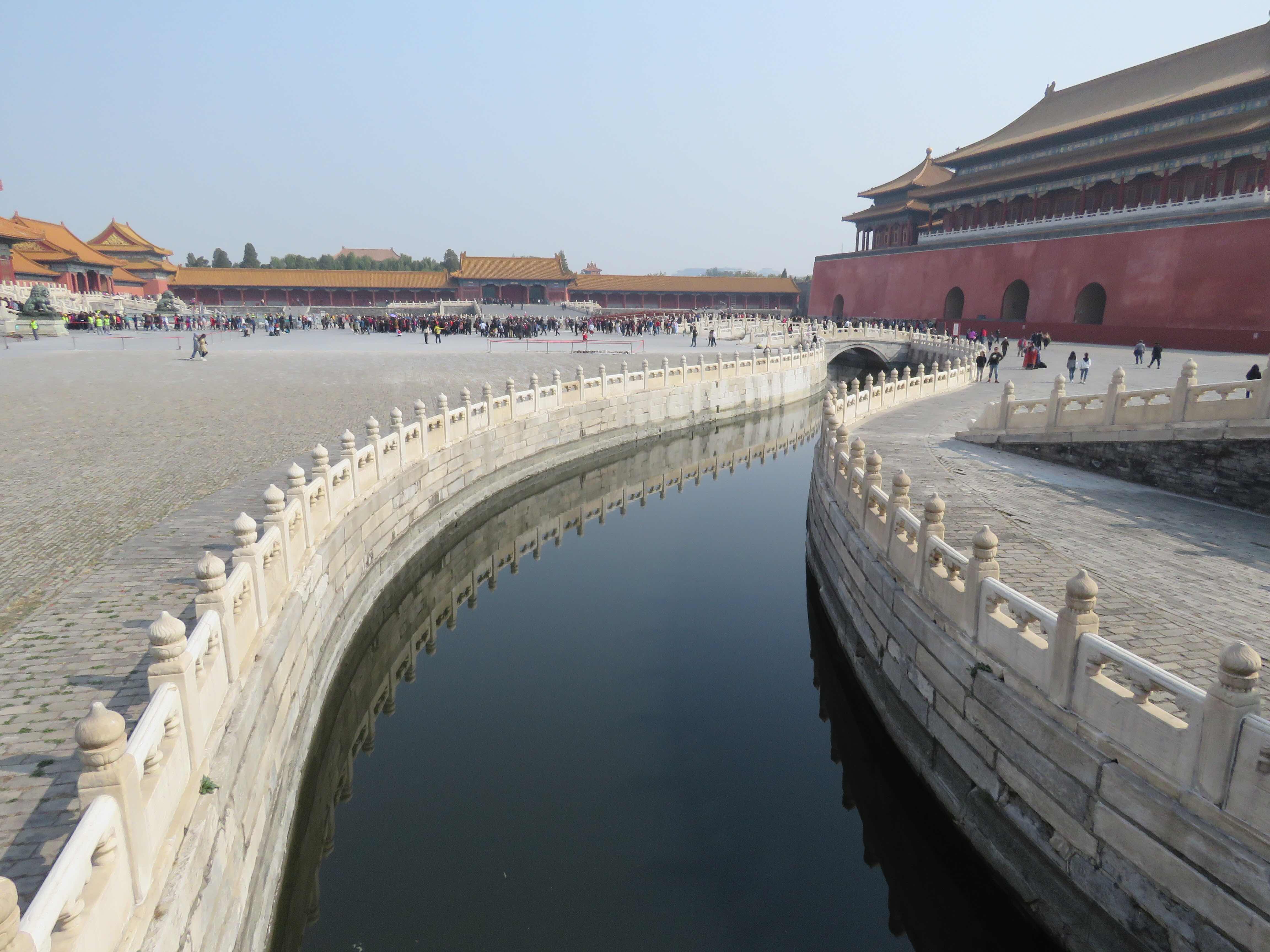Our next stop was Tiananmen Square which is Beijing’s city square and one of the largest in the world. It is the home of the Mao mausoleum where thousands line up everyday to view his body and pay their respects. To those of us in the western world it is probably most known for the Tiananmen Square protests of 1989 where led by students who wanted a change to democracy up to a million people gathered over the days of the late spring. Li Ping sent in the troupes on June 4th and though we will never know the right number between 180-10,454 civilians were killed. Our guide who was born in 1985 had one line in her history book about this which simply stated a revolution took place here in 1989. When she led her first tour group here and they told her what had happened she was horrified. Ironically the literal name of the square is Gate of Heavenly Peace.
The Forbidden City is entered off of the square. This enormous complex was contacted between 1406 and 1420 and altogether there are 980 buildings which make it now the world UNESCO ‘s largest collection of wooden buildings in the world. It is the site of the Chinese Imperial Palace from the Ming Dynasty to Qing Dynasty in 1912 and served as home to the Emperors and their households for that time. It was the center of Chinese government for almost 500 years. The collection of buildings is simply stunning. One goes through many gates and courtyards and official buildings before arriving at the palace which is fronted by a beautiful bow shaped canal crossed by graceful marble bridges. There are living areas for the hundreds of servants and a whole area for the concubines to live so they were at the Emperors disposal. Before you leave the city you pass through a beautifully landscaped garden full of large rocks and winding paths which is a wonderful place of tranquility in this busy city.
From this opulence we we to visit a traditional Hutong in old Beijing. These residential areas first appeared around the 1200’s and are small little homes joined by alleyways with shared courtyards to form a community. The homes do not even have washrooms and each community will have some communal ones that everyone uses. We were lucky enough to visit one of these homes which was very small but tidy and they were lucky enough that they had been able to add a toilet in more recent years but the plumbing is such that they can only use it to void so still have to go to the communal toilets for their daily constitutional. We can just not imagine. We took a tuk tuk tour around the neighbourhood and the one thing that struck us that even though the residences were what we would consider ghetto there were some high end cars parked along some of the alleys. Did not quite make a complete picture. Many of these Hutongs have been torn down to make way for high rises but the government is now protecting those remaining to preserve this part of Chinese culture.
Tomorrow we leave on the next leg of our adventure but thanks to our guides from China Wild we have seen and learned so much about Beijing and China in our short time here.

This Tai Chi group got us to stop as they wanted to put on a special performance just for us. Rather a nice way to start a tour through the grounds.

This woman was taking Chinese yo-yo lessons from a master

The Temple itself sits on several layers of marble and reaches majestically up to the heavens

The blue was used extensively to respect the heavens and contrasts beautifully with the white marble

Tiananmen Square. Hard to believe that one million people gathered here during the revolution.

Our guide insisted on taking this picture of us in front of Mao’s entrance to the Forbidden City. Both of our Dads would be appalled.

This man made canal would through the City with graceful marble sides and ornate marble bridges

Beautiful architecture and colours

The Palace itself

The tranquil gardens at the rear of the Forbidden City

This thickly sugared fruit was quite a popular street food in Beijing.

The courtyard of the home we visited.

The narrow alleyways of the Hutong leading to the homes.

The community square was busy with many games of mahjong taking place.

These are the rather smelly bathrooms that all the households of the Hutong have to use.

A tuk tuk ride through the Hutong

This sweet old man insisted on having his picture taken with us. He held tightly to bot of our hands and welcomed us again and again to China in his language of course. A rather neat encounter.
No comments:
Post a Comment